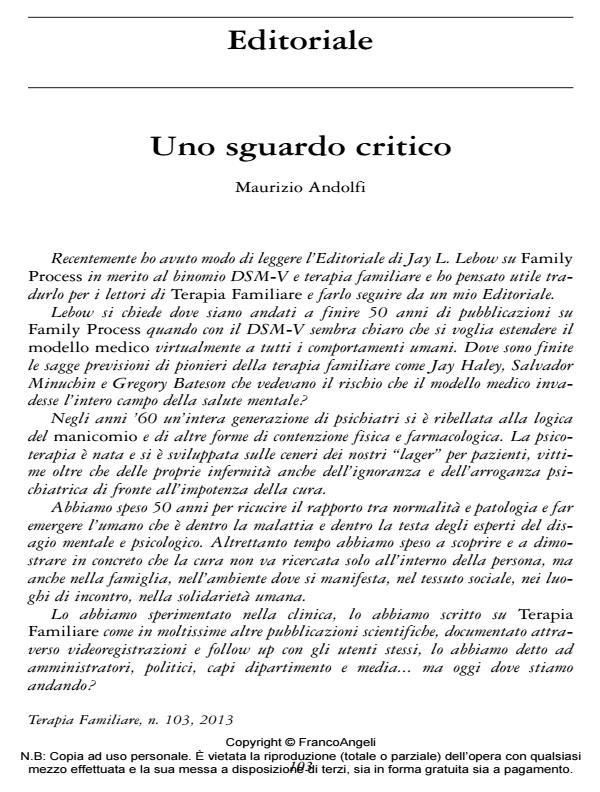Editoriale
Journal title TERAPIA FAMILIARE
Author/s Maurizio Andolfi
Publishing Year 2014 Issue 2013/103
Language Italian Pages 14 P. 103-116 File size 110 KB
DOI 10.3280/TF2013-103007
DOI is like a bar code for intellectual property: to have more infomation
click here
Below, you can see the article first page
If you want to buy this article in PDF format, you can do it, following the instructions to buy download credits

FrancoAngeli is member of Publishers International Linking Association, Inc (PILA), a not-for-profit association which run the CrossRef service enabling links to and from online scholarly content.
Maurizio Andolfi, Editoriale in "TERAPIA FAMILIARE" 103/2013, pp 103-116, DOI: 10.3280/TF2013-103007